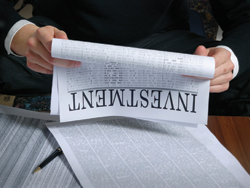Financial Briefs
Email This Article To A Friend
View All Tax Angles On Dividends
What's the tax deal with dividends? At first glance, it looks to be cut and dried. You receive dividends during the year and you pay tax on the amount reported to you on your Form 1099s. End of story, right?
Not exactly. First, many dividends are eligible for preferential tax treatment, much like long-term capital gains. Second, some astute timing on your part can minimize the tax you owe on dividends. Third, you need to be aware of a common tax mishap that befalls investors.
1. Qualified dividends. Generally, dividends issued by domestic companies are "qualified" when paid to stockholders and mutual fund owners, and that normally means special tax treatment. In some cases, qualified dividends also may be paid by foreign corporations, including shares represented by publicly traded American Depositary Receipts (ADRs) and shares that are otherwise readily tradable on an established U.S. securities market.
As for long-term capital gains, the maximum tax rate on qualified dividends is 15%, or 20% for investors in the top ordinary income tax bracket of 39.6%. Investors in the two lowest brackets of 10% and 15% may benefit from a 0% rate on qualified dividends.
To qualify for the reduced tax rates, shareholders of common stock and mutual funds must own the stock for more than 60 days, including the "ex-dividend" date (when dividends are paid). The holding period is 90 days for preferred stock. Being sure to meet these requirements could affect the timing of your transactions.
2. Tax timing. Although investors usually aren't concerned with corporate mechanisms, it's important to know the ex-dividend date. After this date, buyers of the securities no longer are entitled to receive dividends. However, as long as you buy a stock before its ex-dividend date, you then can sell the stock at any time, even after the ex-dividend date, and still receive the dividends.
One common tax planning strategy is to arrange to sell mutual fund shares before the ex-dividend date and buy shares after the date dividends are declared. If instead you buy shares just before the ex-dividend date, you will have additional tax liability for the current tax year, even if the value of your shares declines.
3. Reinvested dividends. Most investors choose to have dividends in an investment automatically reinvested. That way, your money keeps earning more money for you. Just be aware that you're paying tax on dividends each year and your tax basis for the investment should be adjusted upward. Otherwise, if you're not careful, you could end up paying tax again when you sell the shares – in effect, a double tax.
As you can see, there are more tax angles to dividends than first meets the eye. Makes sure you understand all of the rules, and act accordingly.
